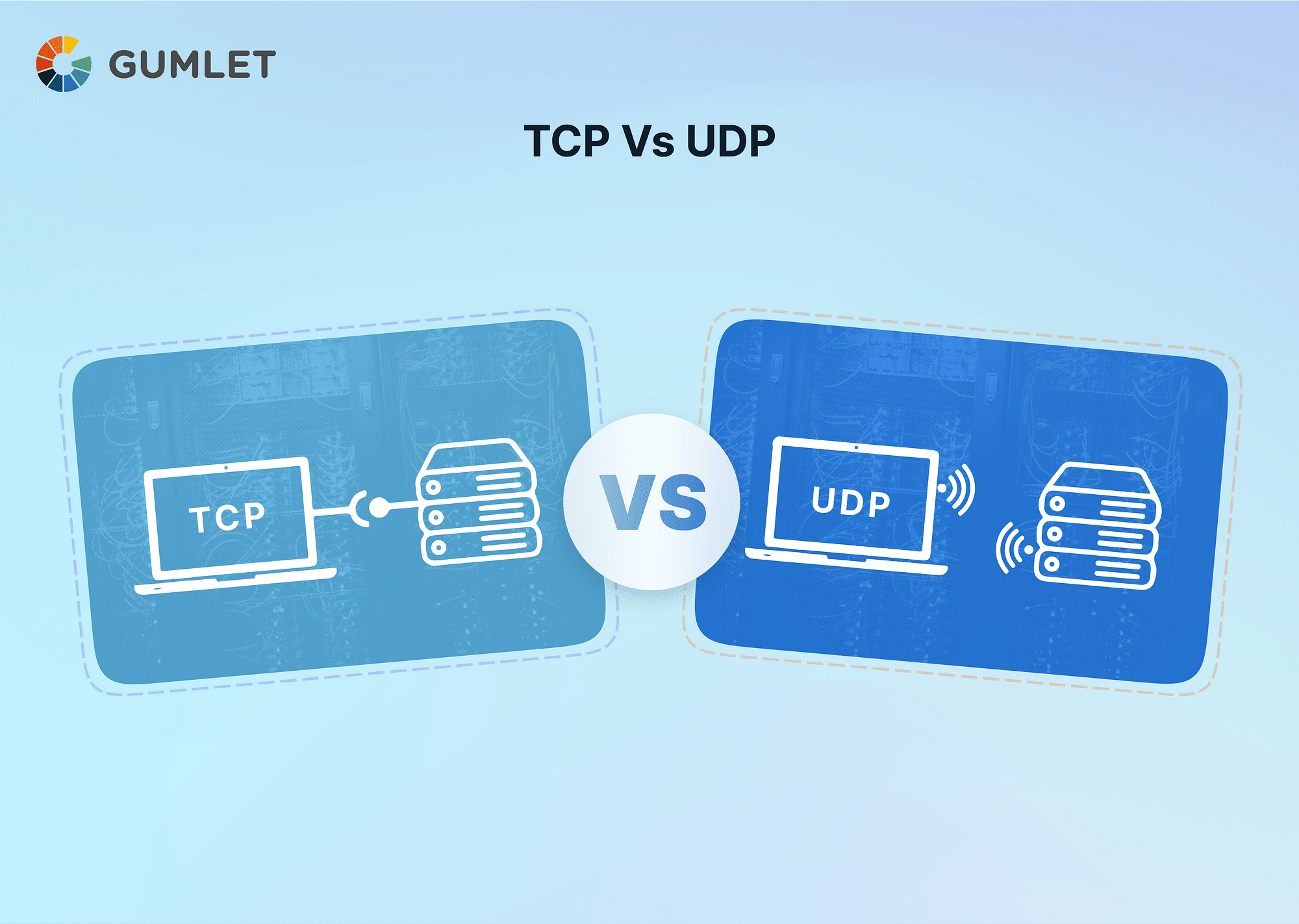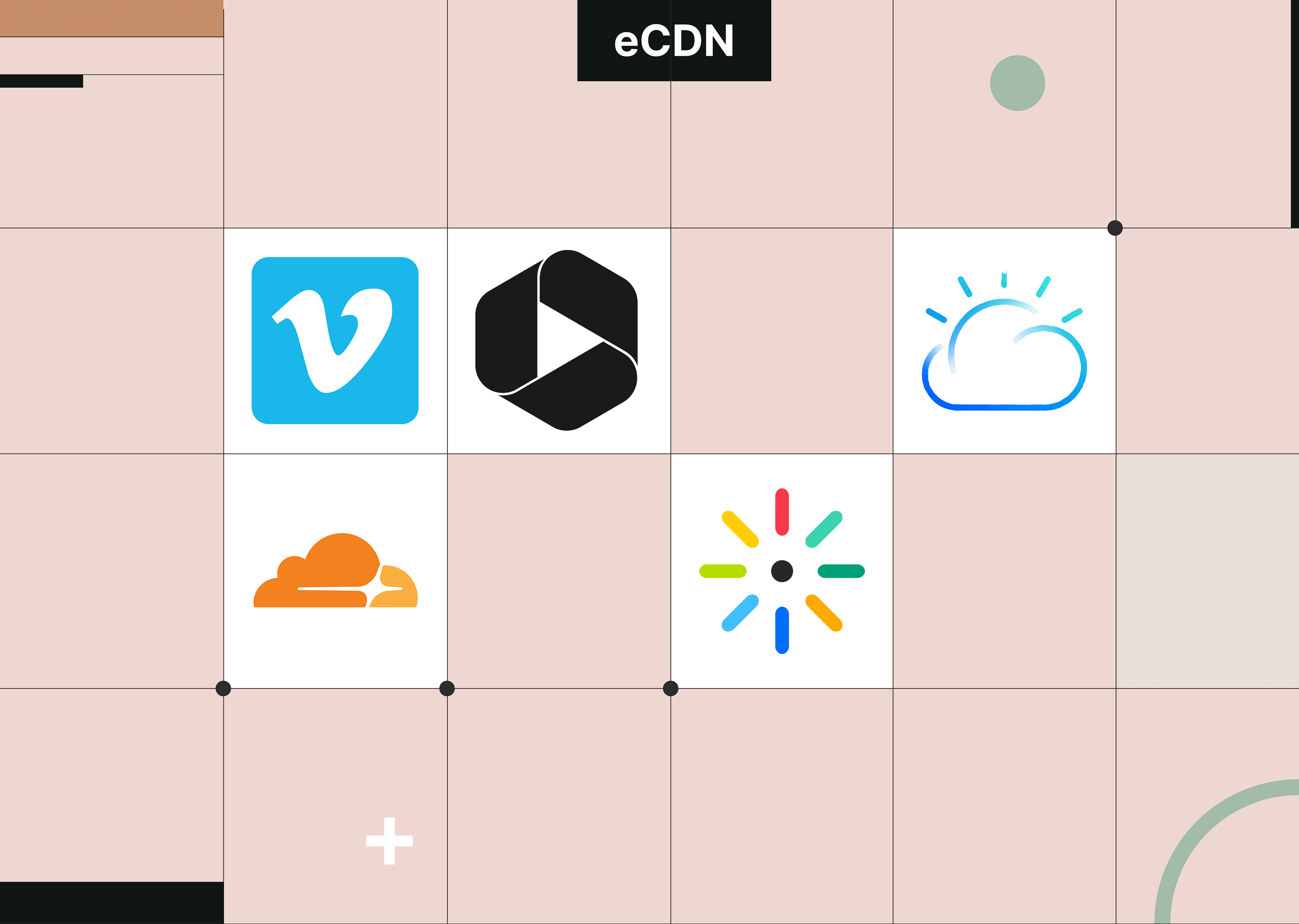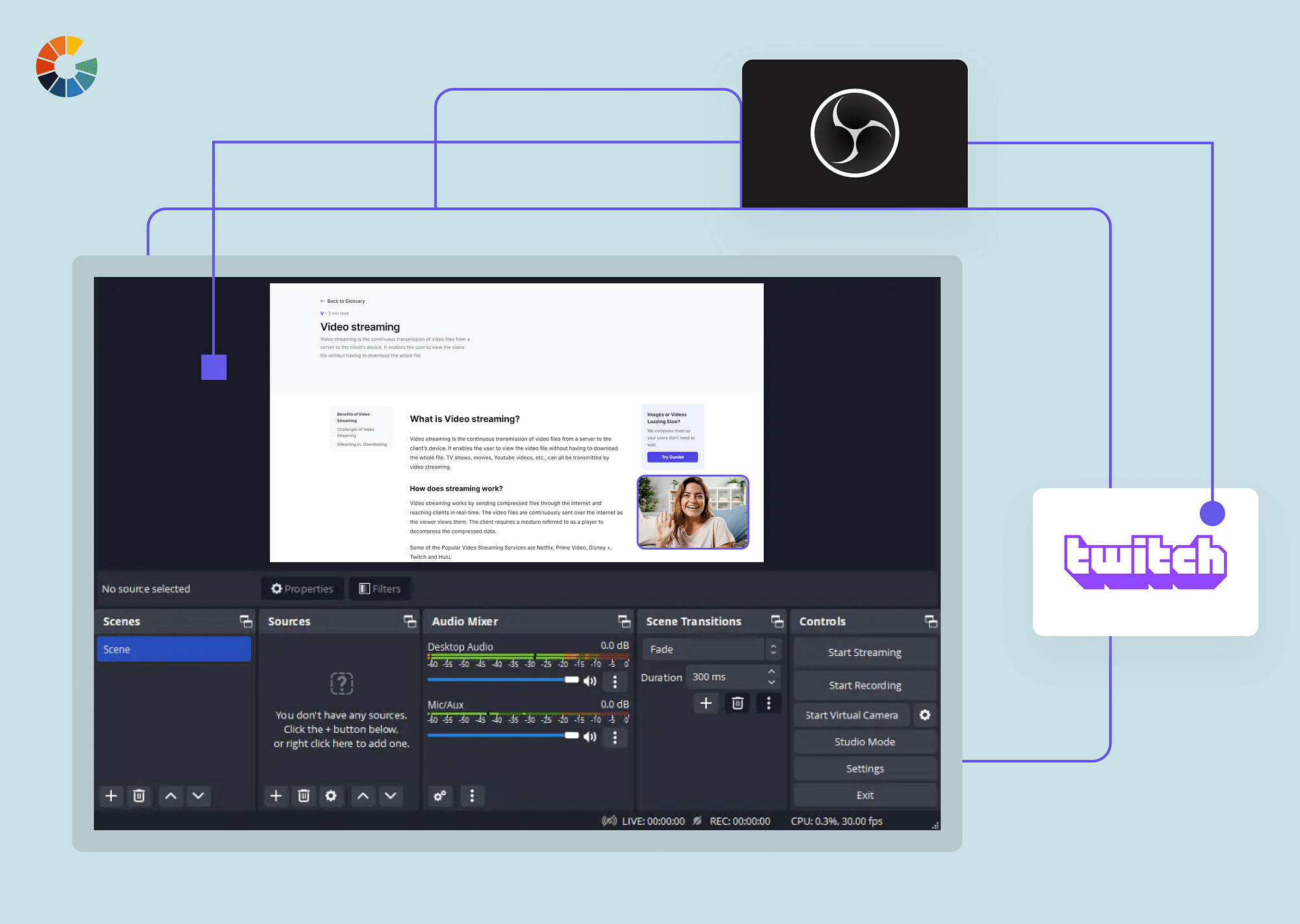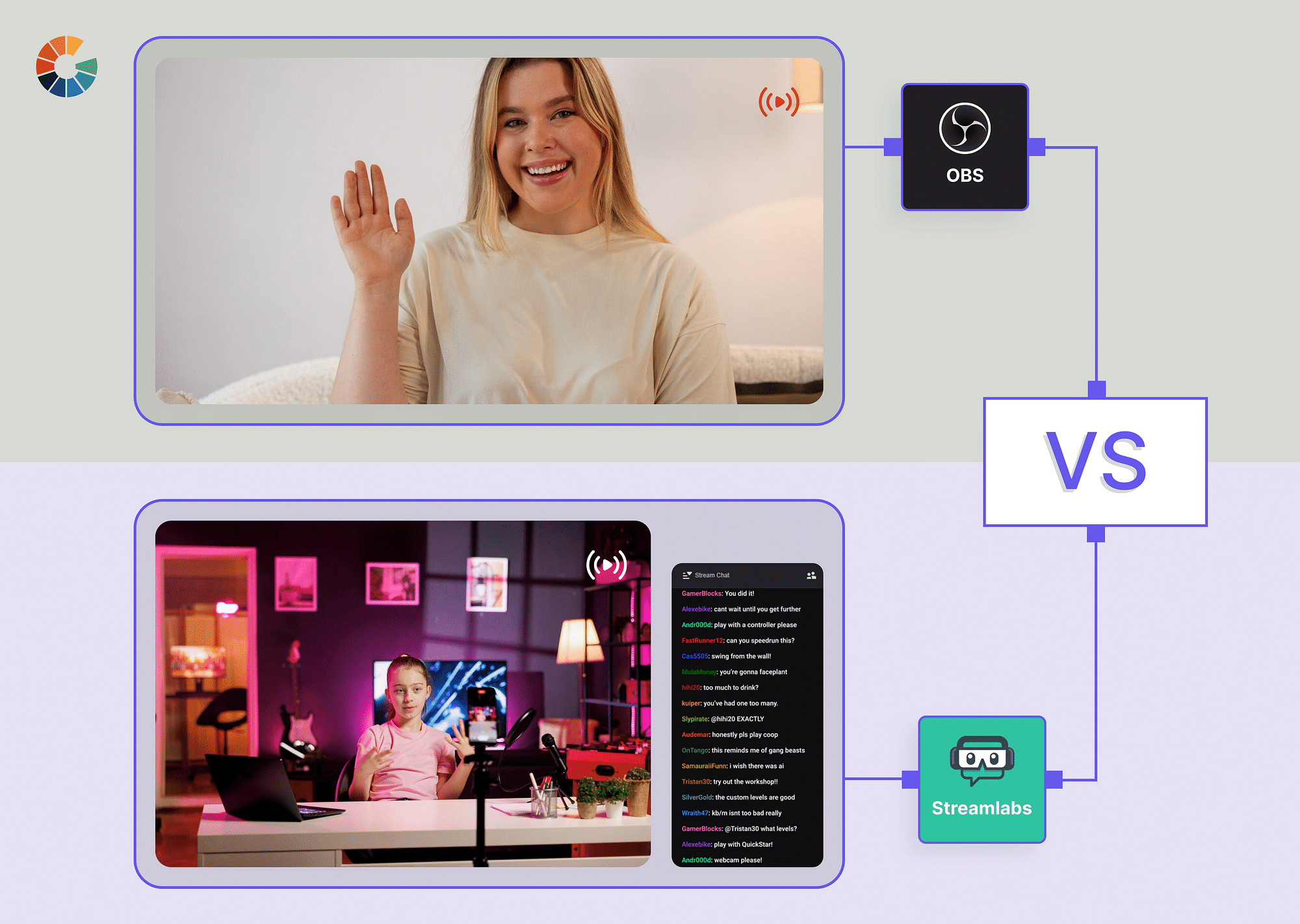The Transmission Control Protocol (TCP) and User Datagram Protocol (UDP) both fall within the purview of the Transport Layer. TCP operates as a connection-oriented protocol, whereas UDP is a constituent of the Internet Protocol suite, denoted as the UDP/IP suite. Unlike TCP, UDP is characterized as an inherently unreliable and connectionless communication protocol.
Let's discuss TCP and UDP in detail.
What is TCP?
TCP, or Transmission Control Protocol, is a cornerstone of the Internet Protocol suite. Positioned between the Application and Network Layers, TCP is pivotal in ensuring reliable data transmission. It operates as a connection-oriented protocol, facilitating the exchange of messages among diverse devices within a network. TCP works hand in hand with the Internet Protocol (IP) to establish the framework for sending data packets between computers.
Pros and Cons of TCP
Pros:
- TCP adjusts its behavior based on network congestion levels, actively preventing network saturation.
- It ensures that data is sent and received in a specific order, which is critical for numerous applications.
- TCP seamlessly integrates with multiple routing protocols, enhancing its adaptability in complex networks.
- TCP's operations are independent of the underlying operating system, ensuring versatility across various environments.
Cons:
- TCP exhibits slower performance at initiating a file transfer, potentially causing delays.
- In Local Area Networks (LANs) and Personal Area Networks (PANs), TCP may not be the optimal choice, given its characteristics.
- TCP lacks dedicated multicast or broadcast features, limiting its applicability in certain scenarios.
- It won't load a webpage until all its components are complete, potentially causing inefficiencies.
What is UDP?
UDP, or User Datagram Protocol, resides within the Transport Layer of the Internet protocol suite, forming an integral part of the UDP/IP suite. Diverging from TCP, UDP stands as an unreliable and connectionless communication protocol. This means that no prior connection setup is required before transmitting data. UDP establishes low-latency, loss-tolerating connections across networks, making it ideal for swift process-to-process communication.
Pros and Cons of UDP
Pros:
- UDP doesn't necessitate a prior connection establishment, simplifying communication and reducing overhead.
- It is particularly well-suited for real-time applications where low latency is crucial.
- UDP can deliver data even if not all components are complete, providing flexibility in data transmission.
- UDP can broadcast and multicast data, making it versatile for various network scenarios.
Cons:
- UDP lacks built-in mechanisms to confirm successful data transfer, which can lead to potential data loss.
- UDP packets can be dropped if errors are detected, potentially impacting the overall integrity of data transmission.
- Routers may drop UDP packets in the event of network congestion or collisions, affecting data integrity.
- UDP does not track the sequence of data packets, which is essential in certain applications.
TCP vs UDP: Key Differences
Here's a table highlighting the primary differences between TCP and UDP:
| Parameter | TCP | UDP |
|---|---|---|
| Latency | Slower due to connection setup | Faster due to no connection setup |
| Reliability | Reliable, guarantees data delivery | Unreliable, doesn't guarantee delivery |
| Data Delivery Order | Ensures data is delivered in order | Data processed in order of arrival |
| Error Correction | Performs extensive error-checking | Performs basic error-checking |
| Congestion Control | Manages congestion to avoid saturation | No built-in congestion control |
| Packet Ordering | Verifies packet sequence | No packet sequence verification |
| Flow Control | Uses flow control mechanisms | No built-in flow control |
| Acknowledgments | Acknowledges segments | Doesn't acknowledge specific segments |
| Security | More secure due to error checking | Less secure, limited error-checking |
| Speed | Slower due to overhead | Faster due to lig |
| Suitability for real-time streaming | Suitable for non-real-time applications like HTTPS, HTTP, SMTP, POP, FTP | Ideal for real-time streaming applications like Video conferencing, streaming, DNS, VoIP |
| Performance | TCP excels in applications where data integrity and reliability are paramount, albeit with a trade-off in speed. | UDP excels in real-time applications where low latency is essential. |
Latency
TCP tends to have higher latency due to its connection-oriented nature and extensive error-checking mechanisms, whereas UDP offers lower latency, making it ideal for applications where low delay is crucial.
Reliability
TCP excels in reliability, ensuring data delivery even in challenging network conditions. However, while reliable, TCP is comparatively slower. In contrast, UDP sacrifices some reliability for speed, as it doesn't guarantee data delivery and lacks extensive error correction.
Data Delivery Order
TCP guarantees the ordered delivery of data packets, which is critical for applications that depend on data sequencing. TCP actively adjusts its behavior based on network congestion levels to prevent network saturation and ensure smooth data flow. However, UDP does not guarantee data sequencing, making it less suitable for such applications. UDP lacks built-in congestion control mechanisms, which can lead to potential data loss in congested networks.
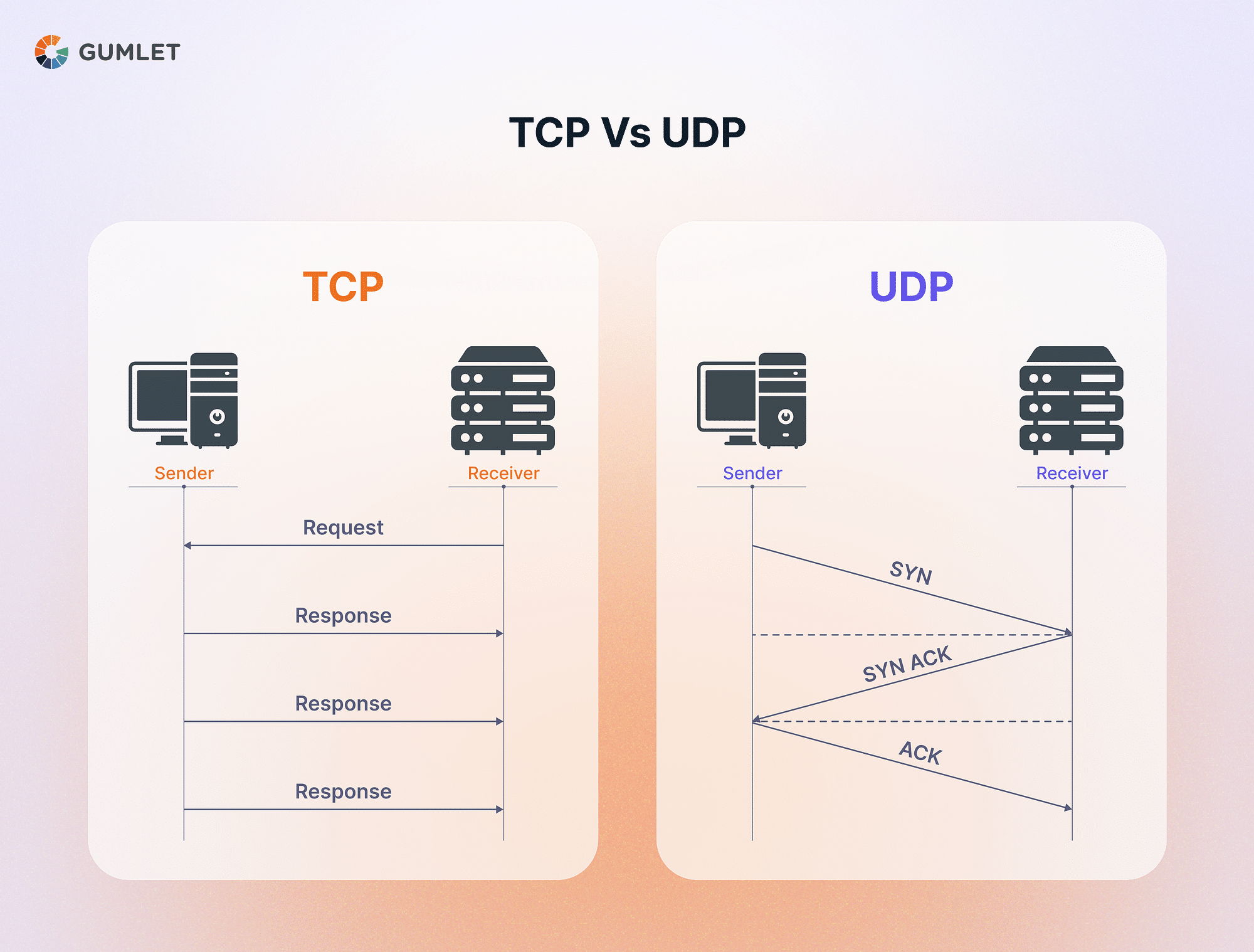
Packet Ordering
TCP carefully maintains the order of transmitted packets, which is crucial for maintaining the integrity of the data. UDP sends packets individually without maintaining order, which may not suit applications requiring strict packet sequencing.
Security
TCP's error checking and sequencing enhance its security, ensuring data arrives intact and in the correct order. UDP may be less secure due to its limited error checking and lack of guaranteed data sequencing.
Which is a better protocol for streaming your videos online?
User Datagram Protocol (UDP) is the superior choice for online streaming videos. UDP emphasizes speed and efficiency, making it exceptionally well-suited for real-time data transmission, including video streaming. It delivers data with minimal latency and without burdening your network's resources.
In contrast, Transmission Control Protocol (TCP), while renowned for data integrity and reliability, introduces a trade-off. Its focus on ensuring every bit of data arrives intact can lead to higher latency and a more substantial consumption of available bandwidth.
Applications of TCP and UDP
Here's a look into the applications of TCP and UDP based on their characteristics.
TCP
TCP is best suited for applications where data integrity matters more than transmission speed, ensuring the reliable delivery of files and web pages.
- TCP is widely used in network communication, making it the preferred choice for various networking applications.
- It is ideal for point-to-point transmission systems, where a connection between two endpoints is established and maintained.
- TCP is recommended for real-time analytics and content delivery networks, ensuring data integrity even when dropped packets could impact outcomes.
UDP
- UDP is well-suited for real-time applications such as broadcasting and multitasking network traffic, prioritizing speed and efficiency.
- It excels in live data transmission, like media streaming, where the high transmission speed is crucial, and minor packet loss is acceptable.
- UDP is preferred over TCP for online gaming due to its speed, as it allows for smoother gameplay, even in less-than-perfect network conditions.
- Video calling applications benefit from UDP's ability to support high frame rates (e.g., 30 frames per second or more), ensuring a seamless user experience despite occasional dropped packets.
Conclusion
With its unwavering commitment to data integrity and reliability, TCP is the go-to protocol for scenarios where each byte must arrive intact, even if it means a slight trade-off in speed. On the other hand, UDP emerges as the undisputed champion of speed and efficiency. Its connectionless nature, low latency, and agility make it a perfect match for real-time applications like video streaming, online gaming, and video calls.
FAQs:
Why is UDP faster than TCP?
UDP is faster than TCP due to its lack of connection setup and lower latency, making it ideal for applications requiring low delay, despite the overhead of TCP's connection-oriented nature.
When is using the transmission control protocol (TCP) most appropriate?
TCP is ideal for data integrity and reliability, especially in point-to-point transmission systems, real-time analytics, and content delivery networks. It ensures data arrives intact, even in challenging network conditions, making it a popular choice in network communication.
Does YouTube use TCP or UDP?
YouTube primarily uses TCP for its video streaming service. TCP's reliability and error-checking mechanisms align with YouTube's goal of delivering high-quality video content without loss or corruption. While UDP could provide lower latency, YouTube prioritizes data integrity, making TCP the preferred choice for its platform.
Why might TCP be preferred over UDP in some scenarios?
TCP is preferred over UDP for data integrity, reliability, and speed in applications like file transfers, web browsing, and email services, especially in limited network congestion and unacceptable packet loss.

